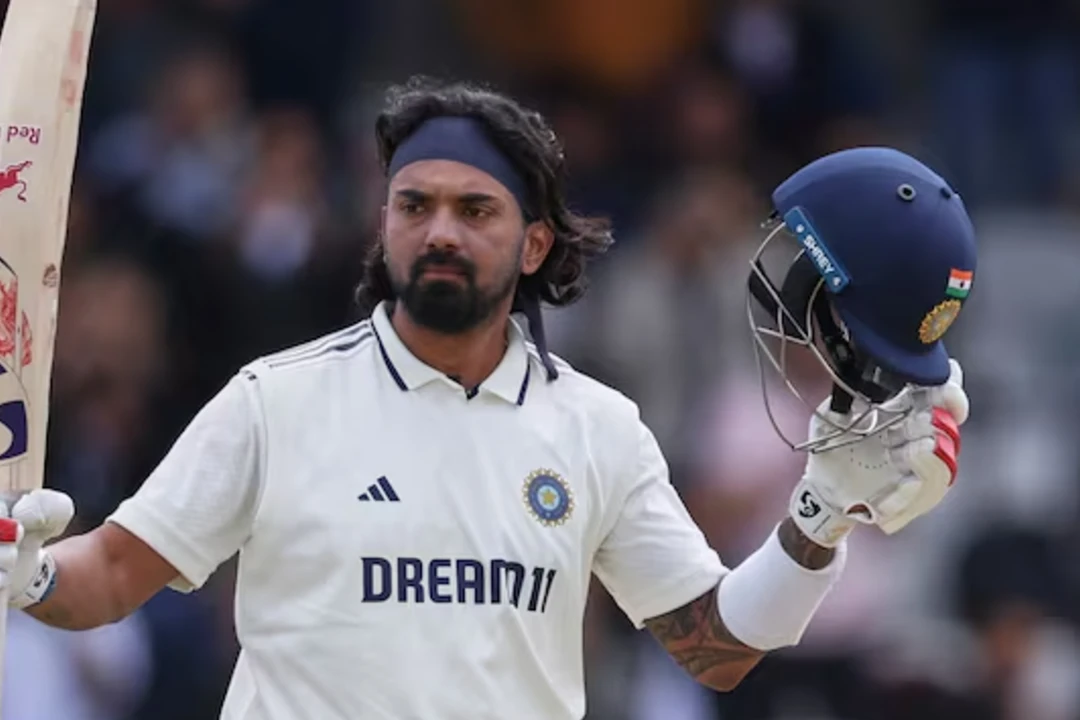From Uncertainty to Authority: KL Rahul Redefines His Role in Leeds
In a team searching for identity, KL Rahul found his own. His Leeds hundred was less a comeback and more a confirmation.

India's veteran batter KL Rahul struck a match-defining century in the fourth day of the Headingley Test against England, helping India recover after a shaky start. His 137-run knock, coming after Shubman Gill's early dismissal, was his third Test hundred as an opener on English soil-making him the most successful Indian opener in England by centuries.
Rahul's innings was defined by patience and positioning. Paired with an attacking Rishabh Pant, their 195-run partnership became the backbone of India's innings. In the post-match conference, Rahul admitted, "I had forgotten what my position really was," referencing the years of role-switching he has endured.
This performance not only steadied India's second innings-it may have settled the question of where KL Rahul belongs in India's Test side: right at the top.
But Rahul didn't bite. He left with precision, ducked with assurance, and played Stokes like a batter who knew the danger but wasn't rattled by it. When Stokes overpitched, Rahul answered with class-especially through the covers, from where he picked up 29 runs in typical elegance. There was no panic. Just composure.
He didn't win the battle with Stokes through aggression. He won it with understanding.
When red-ball cricket means everything
KL Rahul has never been shy about which format he holds dearest. Speaking to Nasser Hussain during a Sky Sports interview, he said it simply:
"I love red-ball cricket. You can't take that away from me."
And it shows.
There's a different version of KL Rahul that emerges in whites. His movements are quieter. His tempo slower. His body language more reflective. You can almost feel the affection in how he builds an innings-never hurried, never flustered, always deliberate.
At Headingley, that love translated into a batting masterclass. The way he left deliveries outside off, the soft hands in defence, the judicious strokeplay-it all reflected a player completely at peace with the rhythm of Test cricket.
The gap-filler who became the glue
Rahul's versatility has often been a double-edged sword. While it's made him indispensable to team balance, it has also robbed him of long-term ownership of a single role. From No. 6 against Bangladesh to No. 4 in Kohli's absence, from makeshift wicketkeeper to emergency opener-he has done it all. And quietly so.
But now, with India's Test side entering a post-Kohli-Rohit era and, his role seems even more valuable. His performances as an opener, particularly in overseas conditions, speak volumes. Eight of his nine Test centuries have come at the top of the order. Five of them in SENA countries. And in England alone, his average as an opener now stands at an impressive 43.11.
He hasn't just filled the gaps. He has become the glue.
Calm in a noisy cricket world
At a time when cricket careers are defined by brand deals, reels, and noise, KL Rahul has chosen something different: silence and substance.
His knock at Headingley wasn't just another hundred. It was a statement. A reaffirmation that, in this new phase of Indian cricket, his presence offers something rare-stability. You need an opener? He's there. You need a makeshift middle-order anchor? He'll take it. You need a fill-in wicketkeeper? He'll do that too.
Now, as the new order of Indian Test cricket finds its rhythm, Rahul's presence feels indispensable-not just because he's in form, but because he understands the value of a place earned the hard way.
Because when the going gets tough, Rahul doesn't ask why.
He just asks, "Where do I bat?"
And then he answers-with runs.




